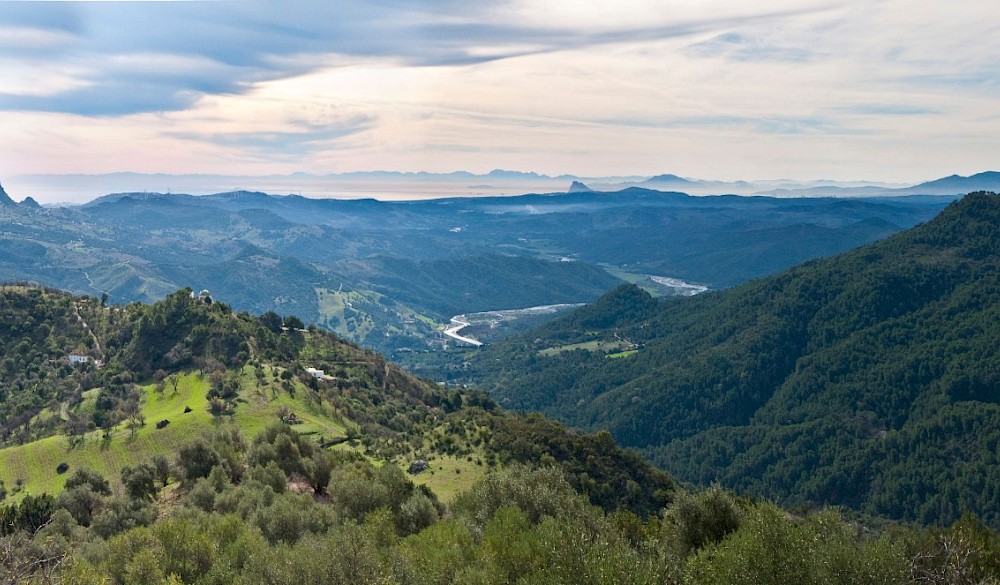It's time to put the tired Spanish siesta stereotype to bed
In the small town of Ador, near Valencia, the siesta is sacred. So sacred, in fact, that in 2015 its mayor enshrined its citizens’ right to the afternoon nap in law.
Everything in the town closes between 2pm and 5pm, while all noise must be kept to a minimum. Parents are encouraged to keep their children indoors and ball games are strictly off the agenda while the town’s inhabitants get their forty winks.
But while Ador is embracing the tradition of siesta , elsewhere in Spain it seems the days may be numbered for one of the country’s most enduring stereotypes. The siesta is now as alien to most Spaniards as it is to the foreigners who package it into their image of Spain.
Almost 60% of Spaniards never have a siesta, while just 18% will sometimes have a midday nap, according to a recent survey. In fact, the Spanish spend far more time working than many of their counterparts in Europe. According to the Organisation for Economic Co-operation and Development (OECD), Spaniards rack up 1,691 hours at work each year while British workers do 1,674 annually and the Germans work just 1,371 hours a year.
So what has led a nation famous in part for its supposedly casual attitude to labour to become one of the hardest working in Europe?
A surprising import
Before tackling this question, it is perhaps worth pausing to consider that the siesta does not originally come from Spain at all - it is from Italy.
“The word siesta comes from the Latin sexta,” explains Juan José Ortega, vice president of the Spanish Society of Sleep and a somnologist - an expert in sleep medicine. “The Romans stopped to eat and rest at the sixth hour of the day. If we bear in mind that they divided periods of light into 12 hours, then the sixth hour corresponds in Spain to the period between 1pm (in winter) and 3pm (in summer).”
From its Roman origins, the siesta became a cross cultural phenomenon, but it was Spain’s peculiar historical working hours that gave Spaniards, perhaps more so than most, the opportunity to fit the infamous nap into their day.
Traditionally, the Spanish working day was split into two distinct parts: people would work from 9am until 2pm, stop for a two hour lunch break and return to work from 4pm until around 8pm. This disjointed day came about because in post Civil War Spain, many people worked two jobs to support their families, one in the morning and one in the late afternoon. The two hour break allowed workers, especially those in rural areas, time to rest or travel after the first job ended.
Then between the early 1950s and early 1980s, Spain experienced unprecedented migration from rural areas to its cities, where the majority of its citizens now work. Here, few people have a siesta, but the long working day appears to have remained ingrained in the culture.
The presentismo trap
Spain’s evidently longer working hours do not equal more productivity. Instead, many Spanish businesses are afflicted by presentismo, or presenteeism.
“Presentismo is spending hours more than you really need to at work in order to seem more serious and committed to your organisation,” said Marc Grau, a research fellow at the Harvard Kennedy School and an expert in work-life balance. “It is particularly prevalent in Spain due to the old mentality in traditional companies of more hours equals more work, and long working hours because of the long lunch break in many companies.
“Presentismo may seem good in the short term but it is tremendously pervasive in the long term. It can affect motivation, job performance, work satisfaction, life satisfaction and it obviously has an effect on family life.”
While presentismo has been an issue in Spain for decades, it has become especially prevalent since the most recent global economic crisis hit the country. In the wake of recession, in 2013, Spain’s unemployment rose to 27%, while in the same year youth unemployment reached a record 56.1%.
The unemployment rate has dropped since then, but was 18.8% for the first quarter of 2017, still the second highest in the European Union after Greece. A deep-seated fear of losing their jobs has left many Spanish employees spending even more time at their desks.
The fear of losing their jobs has also made Spanish workers far more sceptical of using flexible working policies, says Grau. The fear is perhaps stronger in Spain than other countries because of the severe effect the economic crisis had on the country combined with its historic tendency towards presentismo.
“During the economic crisis there were abuses in work schedules, the fear of losing your job was very strong,” agrees Susana Pascual García, an environmental scientist at ACEFAT, a small business in Barcelona managing public infrastructure projects..
Her firm is one of an growing number of Spanish companies encouraging their employees to embrace a more flexible working culture and making a concerted effort to move away from the old culture of presentismo.
According to a 2015 study by management software company Sage, 80% of small and medium-sized businesses in Spain are in favour of implementing measures that would improve the work-life balance for workers.
“Turning off the lights at a predetermined time or not organising meetings from a certain time onwards are helping to change the situation,” says García.
Another company offering flexible working to its 100-plus employees is Tecalum, which produces aluminium parts in Girona, north eastern Spain.
“Many Spaniards spend too much time in the office, but in our case, if you compare it with the past, things have changed a lot,” says Maria Reig, head of Human Resources at the company. When Tecalum offered workers a two-hour break in the middle of the day, they instead requested an hour’s break at midday and to finish the day an hour earlier, so they could get home.
Tecalum also offers its staff a flexible starting time each day. This approach has had a major impact on the lives of the people who work there.
“A lot has changed in our case - there is usually no one left in the office at 6pm,” says Reig. “Giving workers more flexible hours makes them feel more satisfied and their productivity increases.”.
In 2016 the Spanish government even tried to take steps to shorten the working day by up to two hours by putting an end to long lunch breaks.
Power naps
Some experts believe the traditional siesta may still have a place in the modern working world, especially when so many of us are apparently already sleep-deprived.
A recent survey by the Flex Sleep Research Centre showed the average amount of sleep people get per night in Spain is 7.1 hours a night. While this is more sleep than people get in countries including the United States (where people sleep, on average, 6.8 hours a night) it’s still almost an hour shy of the eight hours recommended by experts and similar to other developed countries like the UK, where 70% of people sleep seven hours or less.
Spaniards’ sleeping habits may be partly explained by the fact that General Francisco Franco moved the country’s clocks forward an hour in solidarity with Nazi Germany during the second world war. Some experts believe returning the nation to its former time zone would go some way to addressing the issue of sleep deprivation among Spaniards.
The Spanish also go to sleep later than their European neighbours. According to Eurostat, Spaniards go to bed, on average, at midnight, compared to Germans at 10pm, the French at 10.30pm and Italians at 11pm.
“As in other developed countries, there is a pronounced deficit of sleep with respect to our ancestors - around 1.2 or 1.3 hours compared with our grandparents,” says Ortega, who also works at the European Sleep Research Laboratories at the General University Hospital of Castellon. He believes there may still be a place for the siesta in Spain and other parts of the world.
“A brief siesta helps us to alleviate stress, strengthens the immune system and improves performance,” he said.
But if the siesta is to survive into the 21st century, it will perhaps have to become more compatible with office work culture in big cities. Some companies are already thinking of new ways for Spaniards to enjoy a snooze without it interfering with their busy work schedules.
21st Century siesta
Sleep pods were trialled in Madrid’s Atocha train station in early 2017, offering busy office workers the chance to grab 40 winks during their lunch breaks. The initiative, run by online booking website Hotels.com, ran under the slogan “‘save our siesta”’.
The trial proved popular with Madrileños, who snapped up the chance of a quick rest during the busy work day.
“As a Spaniard, I’ve always known that the siesta is an important part of our culture,” says Santi Perez Olano, senior marketing manager at Hotels.com “There are countless studies that show that around 20-30 minutes of daytime sleep can contribute to a decrease in fatigue and an increase in concentration.
“If the siesta can help improve productivity, perhaps it should be redesigned for modern life.”
Some people are integrating the benefits of a siesta into modern life by using technology. SiestAPP, launched in 2014 by Spanish developers, is one of many sleep-optimisation apps promising to help users replicate the Spanish siesta by measuring their sleep patterns, then waking them just when they are likely to be the most refreshed and revitalised.
“The siesta should not be incompatible with today’s working life, even in the workplace,” says Juan José Ortega. “If employees can have a coffee or a smoke, then why not a nap?”
www.bbc.co.uk






